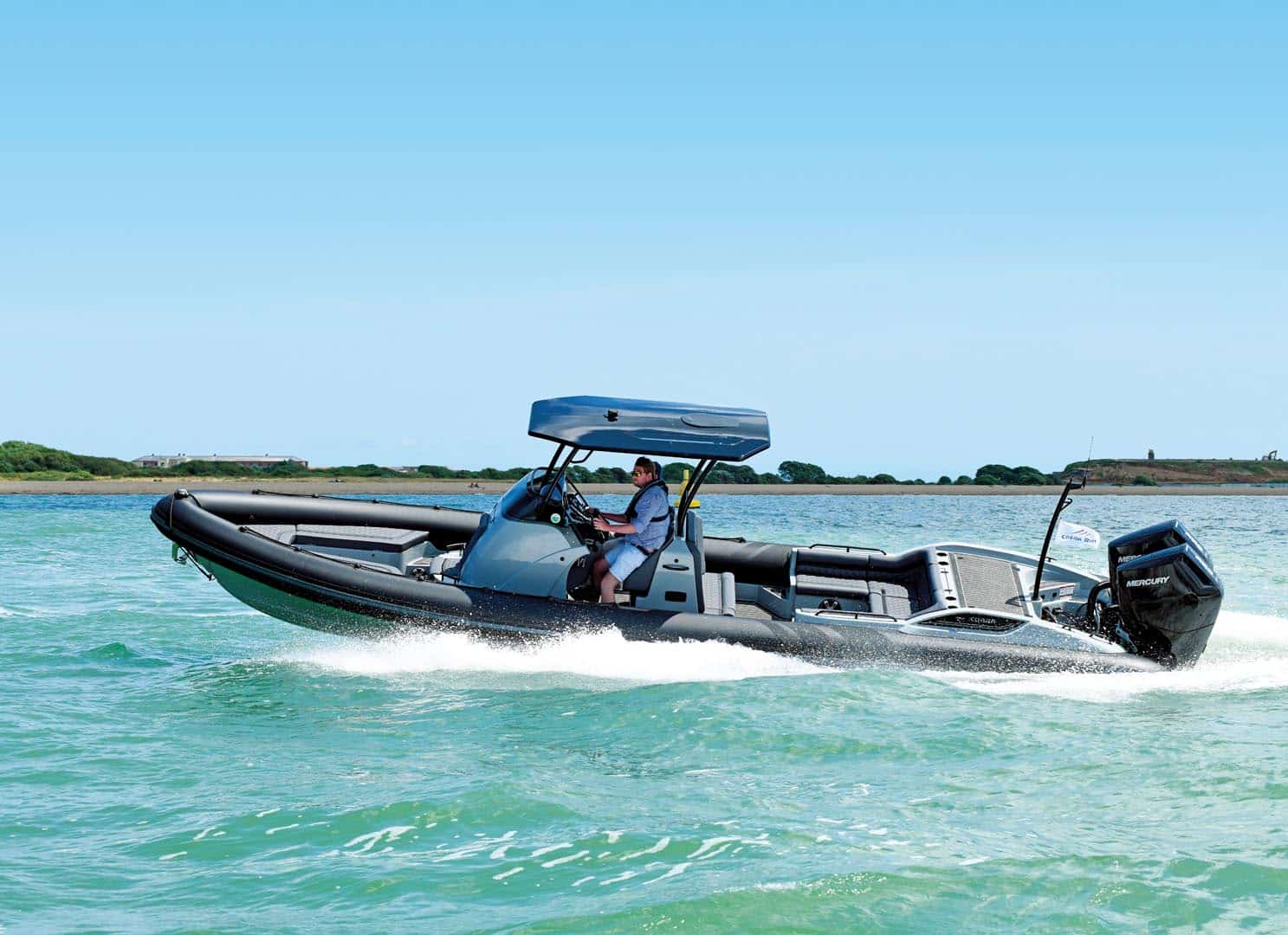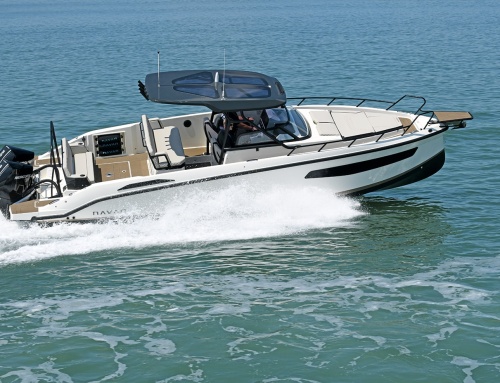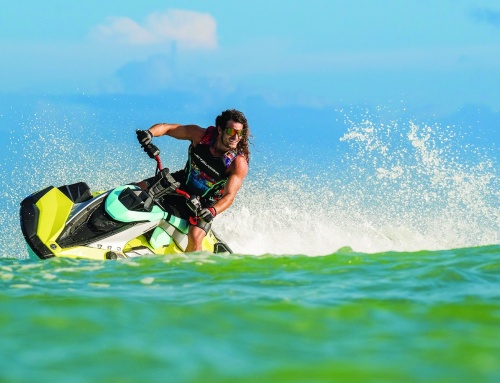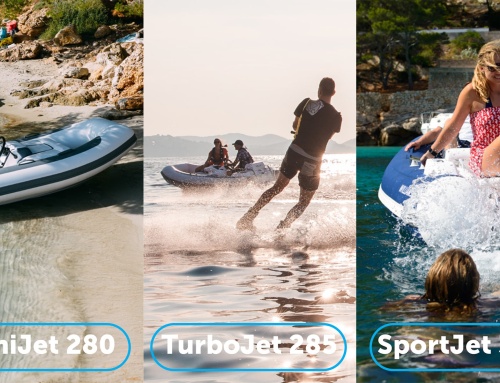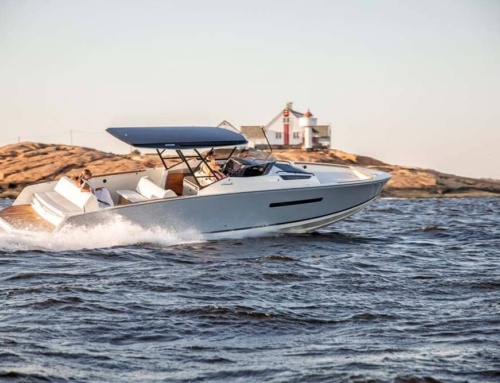Unmistakably Cobra, the reborn 9.7 has even more bite, as Greg Copp discovers …
If you know RIBs, you will likely realise that the Cobra 9.7m has been with us for a few years. Originally launched in 2016, it has now had a bit of a redesign. This has been focused mainly on the new console, but with Mercury seemingly releasing ever bigger outboard engines, it made good sense to give this big Cobra more sting in its tail. Like all of the Nautique range, it was part of a new design campaign in 2016 that aimed to use the best aspects of the original Cobra hulls and improve on them. It is claimed that this range is now more ‘aggressive, efficient and deeper vee’ than their previous designs.
Built on the earlier Evolution hull, which was a development of the original Picton hull, it has a twin-chine set-up. The lower chine produces a similar effect to a Petestep hull, channelling water aft beneath the boat, thereby improving performance and ride. This chine is downturned slightly towards its edge rather than horizontal, which has the effect of tucking the water downwards and under the boat. Cobra claim that as well as ensuring a drier ride and an increase in efficiency, it provides better stability and grip in tight turns. One thing is for sure: with a transom deadrise angle of 26.5 degrees, the 9.7 is unquestionably sharp.
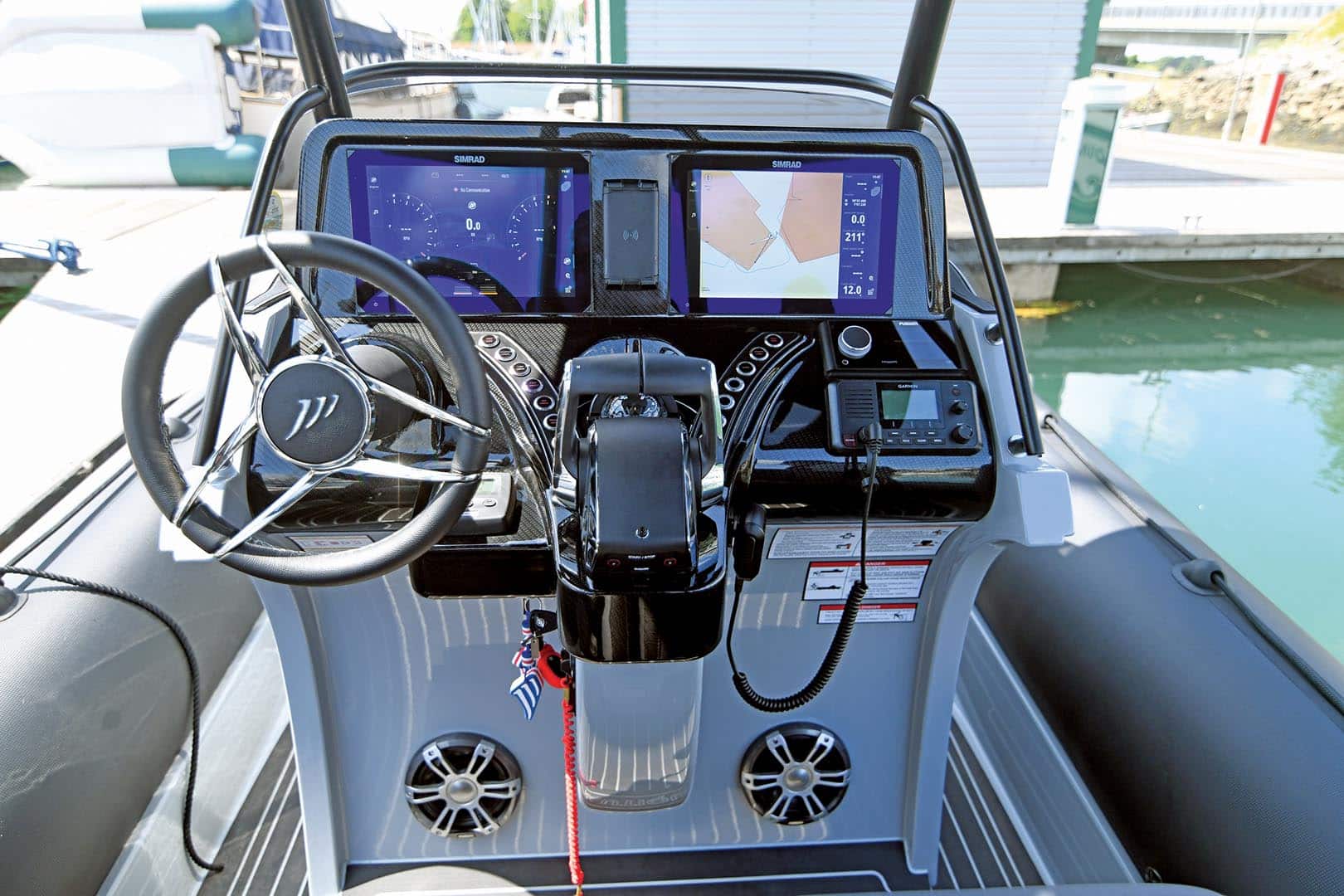
Helm ergonomics are very good
Hull lines aside, the topsides of this boat are eye-catching, with the new contemporary console being the centrepiece. The standard fitment for the helm console is a 9in Garmin MFD; however, I doubt many will ignore the twin 12in Simrad MFD upgrade, in order to fill the wide carbon-effect dash, if nothing else. There are a host of standard-fitment features for the helmsman and navigator to enjoy – notably a wireless phone charger, Bluetooth stereo, VHF and USB charging points. Naturally there are some upgrades available in this area, in particular the powder-coated T-top with removable canopy at £13,500, an LED-lit bar at £800 and a hi-fi upgrade at £4,750 that is certainly powerful enough to keep you entertained at over 40 knots. Both helm seats have a concealed suspension system, which may not give the shock mitigation of a pair of sprung offshore jockey seats, but they are more than capable of dealing with the conditions that this type of RIB is likely to encounter. Underneath all this sits a pair of drawer fridges – enough cold storage for a couple, but a family on a long hot day out might find their sustenance running short.
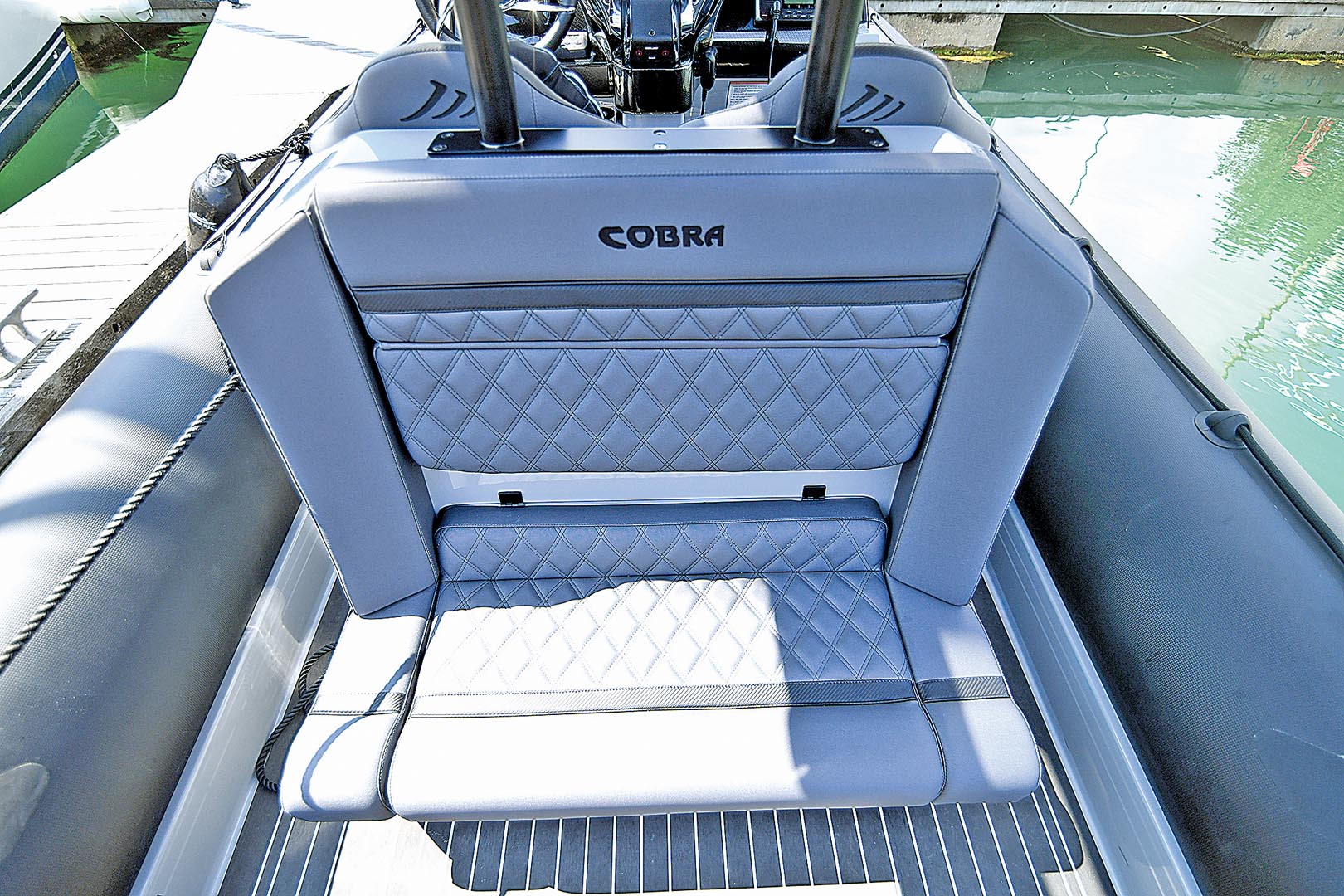
The aft-facing sofa has secure storage compartments behind.
Cobra were one of the first RIB manufacturers to come to terms with putting a credible heads compartment in a rigid inflatable boat. Consequently, few will have issues with the facilities provided in this craft – accessed by the gas-strut-assisted seat hatch on the front of the console. By dropping the deck level as low as possible, this compartment has more internal headroom than you might expect, and it comes fitted with a sink and an electric-flush toilet. The synthetic teak decking, as with the rest of the boat, comes as standard fitment. The heads aft bulkhead has a quick-access hatch to the console, as well as being completely removable for system maintenance. The foredeck area has the traditional bow sunbed or, with the cushion infill removed, a V-shaped seating area. Should you need to access it, the optional windlass lives in a locker under the forepeak seat.
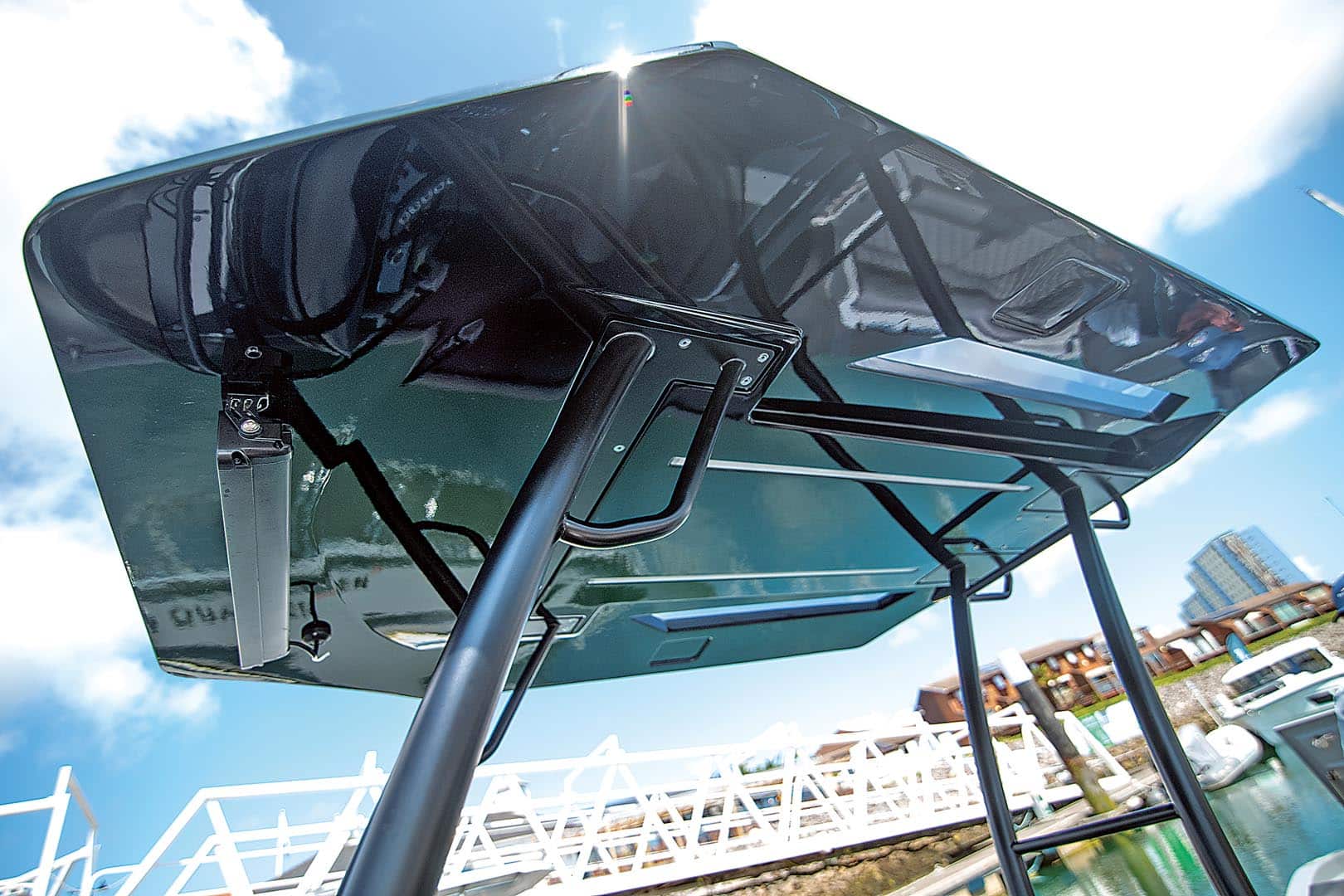
This T-top comes with a removable canopy.
Behind the helm, the large U-shaped seating design and the aft-facing settee on the back of the helm provide comfortable seating for six. Cleverly, the carbon-effect table folds out from a compartment under the aft seating – so no having to slot in a table leg that has got lost in one of the storage compartments, and then dragging out the tabletop. There is plenty of storage under all the seating, including the seat back of the aft-facing settee, which has two mobile phone charging ports, while the internal finish within all compartments is of a high standard. Being an outboard boat, the 9.7 benefits from on-board space that would otherwise house a large sterndrive engine. In this case, this area located beneath the aft sunbed provides a big storage compartment, with all the system components, switches, breakers and the hi-fi amplifier mounted on its forward bulkhead, while two batteries sit on either side. This is great for access to all these key components, but they need to be covered for this area to safely house the abundance of wet water toys that it will attract. From what I understand, this idea is already under consideration.
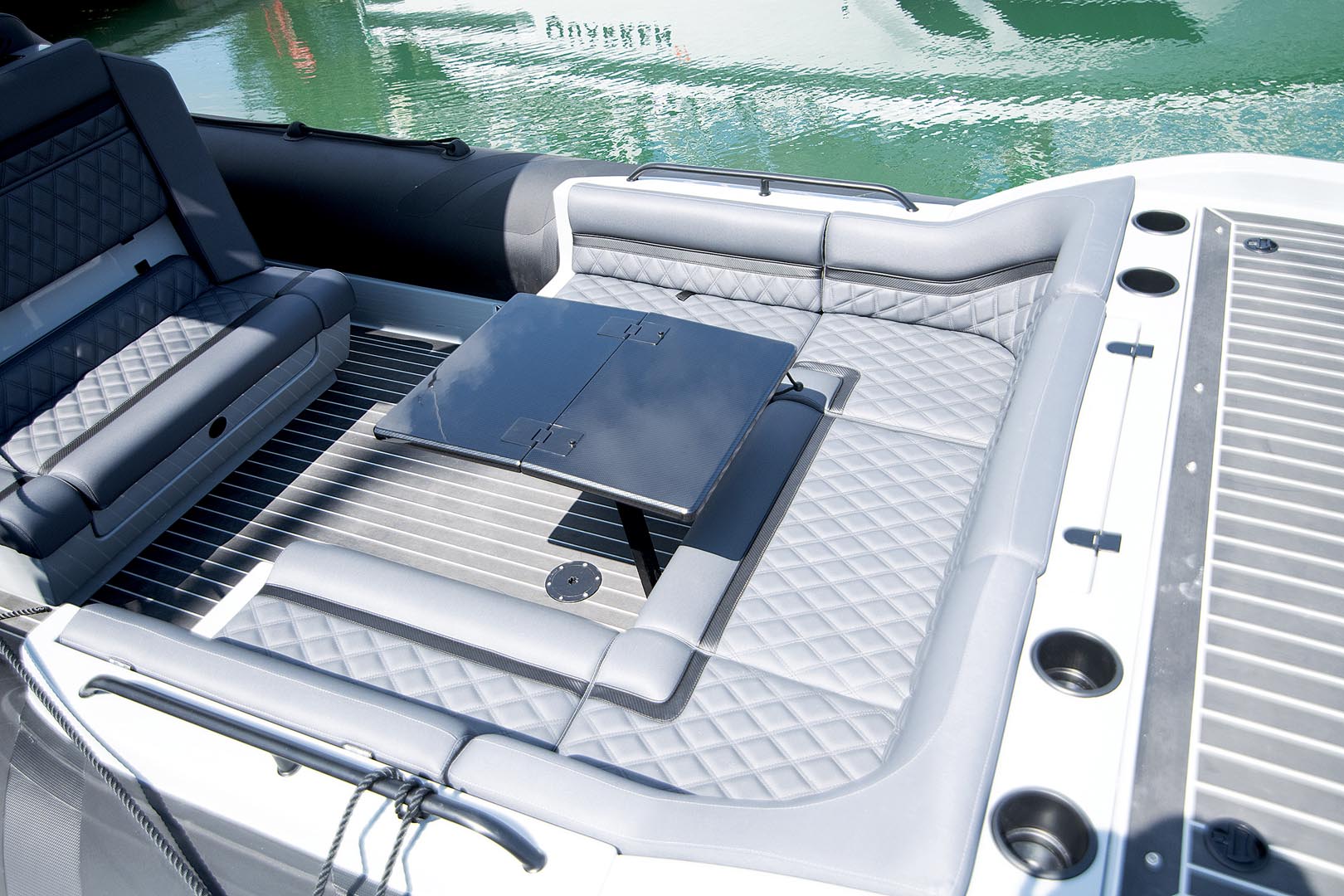
The driving set-up is enclosed and secure
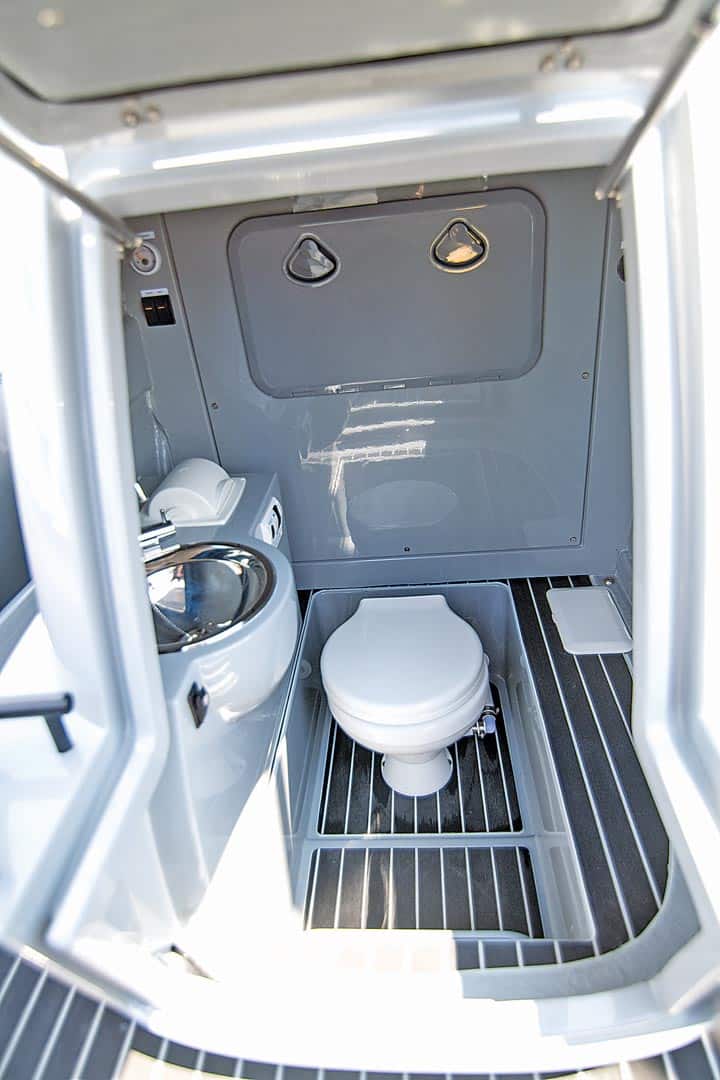
A well-equipped heads.
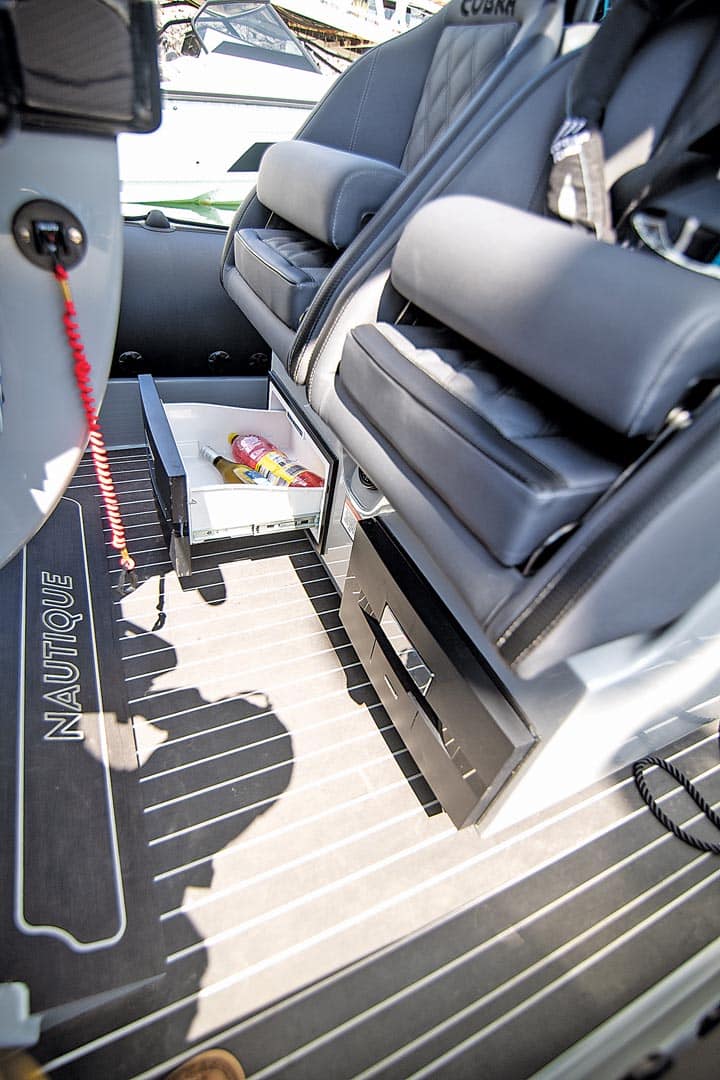
Two drawer fridges live under the helm seats
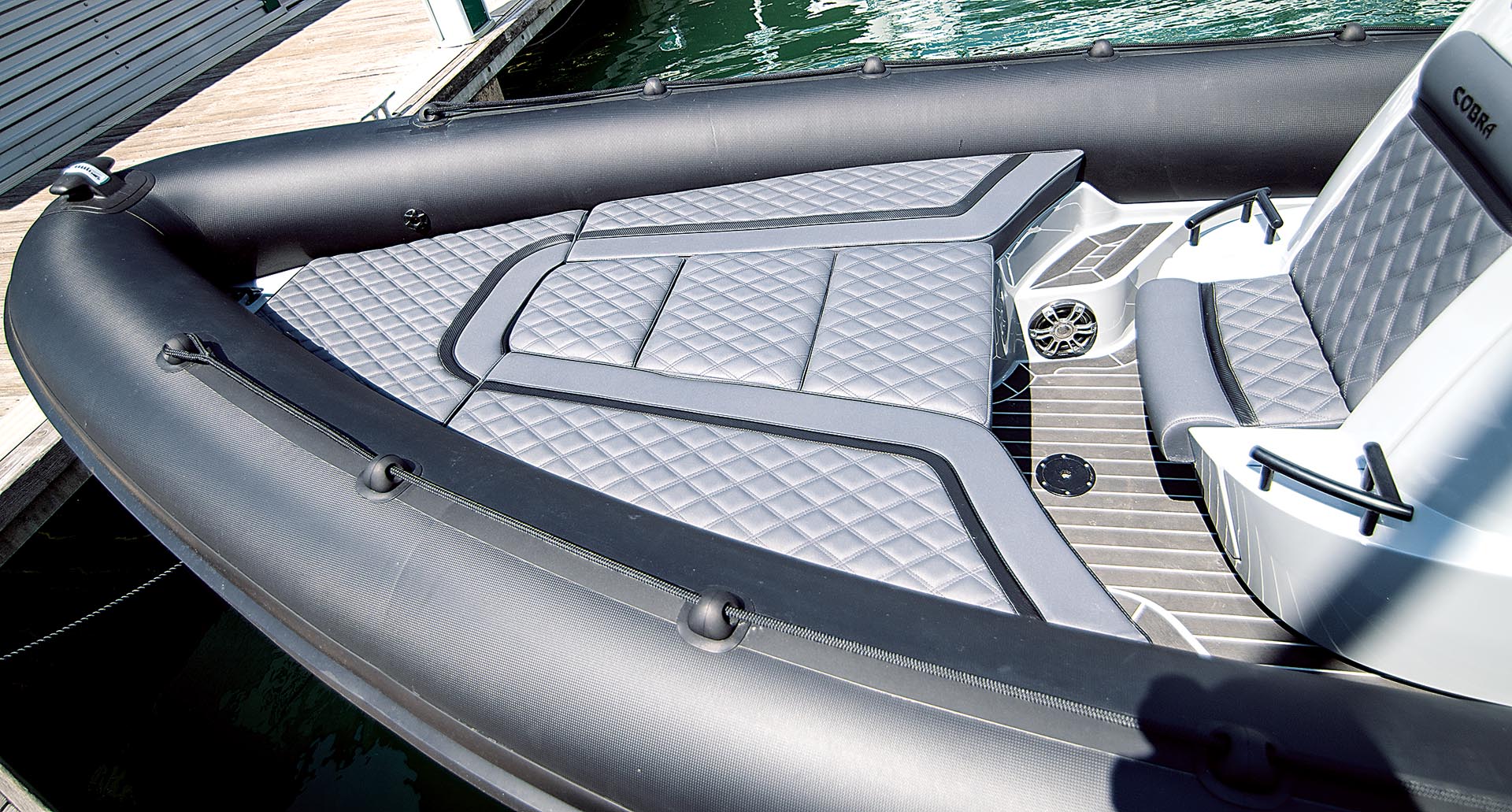
A large bow sunbed
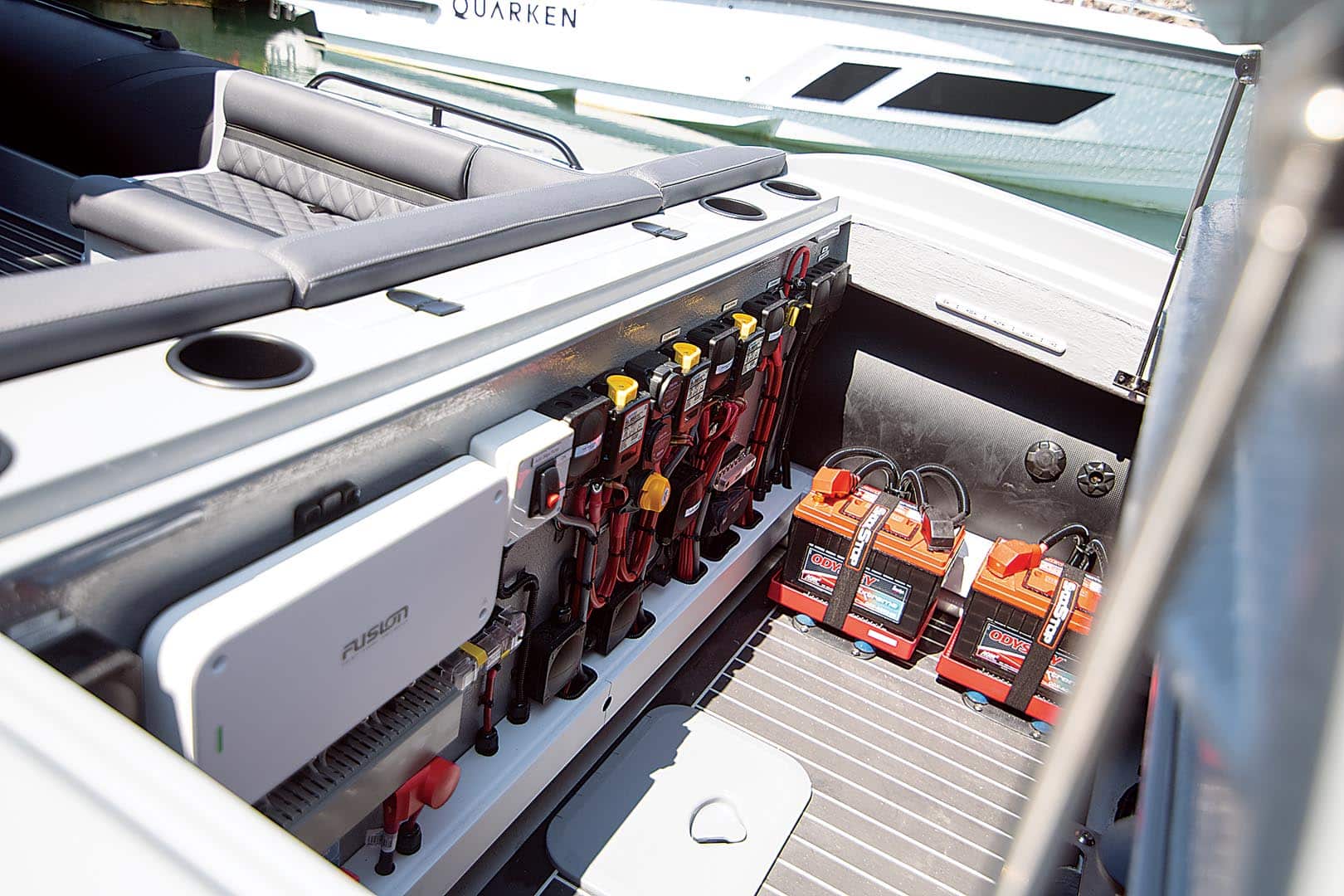
Great storage, but the batteries and system components need a cover
Driving the Cobra
The first thing that strikes you about this boat is the near absence of any transition from displacement to planing. You have to look carefully at the bow to see it creep over a gentle hump before the boat settles into planing mode at around 13/14 knots. It is, of course, a family-orientated Gran Turismo, but with 700hp on the transom, by most people’s standards this is a very fast boat. It will hit 40 knots in 9 seconds, which is quick, but there are lighter boats that are faster off the mark. Where this boat comes on song is from 20 to 50 knots, as once this 2.9-tonne RIB is up and planing, it is merciless in its power delivery. Nailing the throttles at post-20-knot speeds has you grinning from ear to ear as the Cobra composes itself and hammers forward with instant response. It is also deceptively quiet, as the silky smooth V10s are barely audible at times, and you really need to be piling on the power driving out of the turns to feel that the engines are working. Once you are past 25 knots or so, you need to trim the engines out to at least 1.5 on the trim gauge, and when pushing up the spectrum, you need to be running at 3.0 to hit her 63-knot top speed.
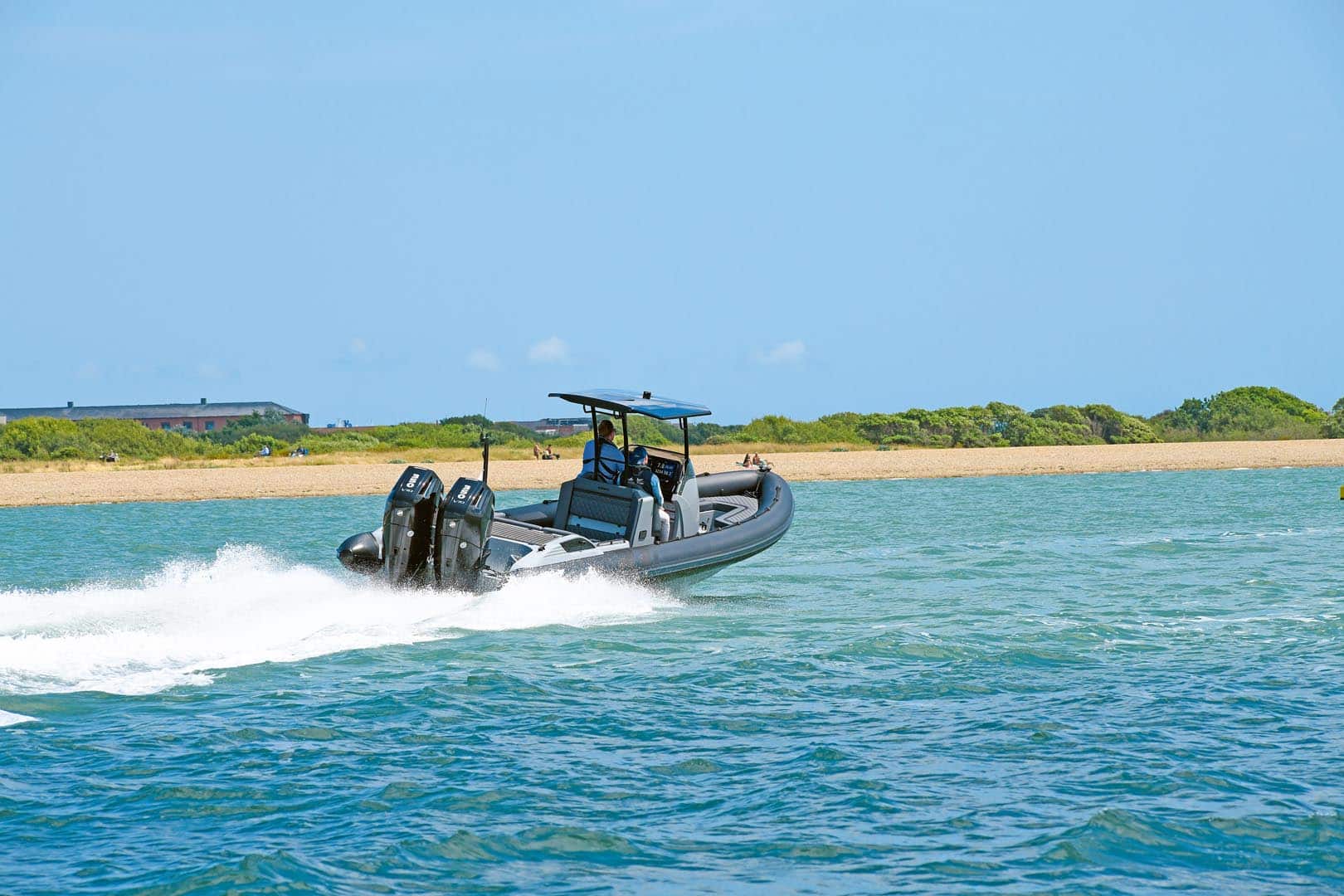
It is a family-orientated Gran Turismo, but with 700hp on the transom, by most people’s standards this is a very fast boat.
If you keep her trimmed all the way in past 25 knots, she will, as was pointed out to me, ‘steer by the nose’. This directional uncertainty vanishes instantly once you trim out to just 1.5; however, all this manual input would have been redundant if Mercury’s Active Trim system had been engaged on the day. Active Trim is a GPS speed-controlled system that automatically trims the engines according to speed, but it is easily overridden by manually trimming the engines. I know from past experience that it is very effective, providing a simple point-and-shoot experience no matter how you drive the boat. She turns pretty quickly, heeling quite hard into the corners, and like her smaller siblings, her non-stepped hull holds the water well. However, you do get the impression, when heeled hard over, that a degree of self-restraint might be wise when dishing out the immense levels of torque that two 5.7L V10s can deliver.
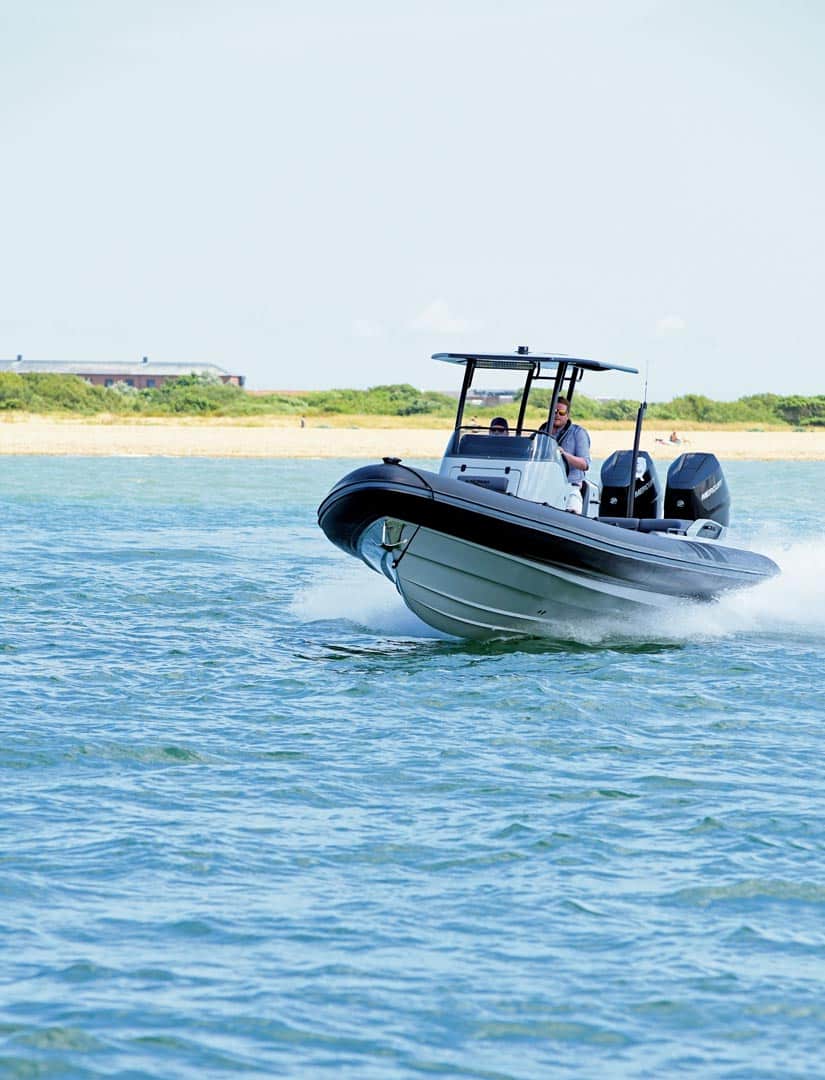
What limited weather we had on the day was not particularly testing, but we did find a bit of confused water further out, which was easy work even past 50 knots. As has always been the case with this brand, the solid hull lay-up never complains.
Verdict
This is a very capable boat built by a British company with a lot of experience in big luxury RIBs. Distinctively Cobra at a glance, the format has deviated little with time, which is no bad thing. However, subtle contemporary changes, and the advent of Mercury’s impressive range of V8 and V10 engines, have put this boat at the forefront of its class. In its tested form, this craft may, on appearance, have a generous price tag, but it does not really need twin V10s unless you must have a 60-knot top speed. Available with twin 300hp 4.6L V8s, this is still a 50-knot boat, and it costs quite a bit less. That said, I have no doubt that there will be some petrolheads who will consider the twin 400hp V10 option the boat to have.
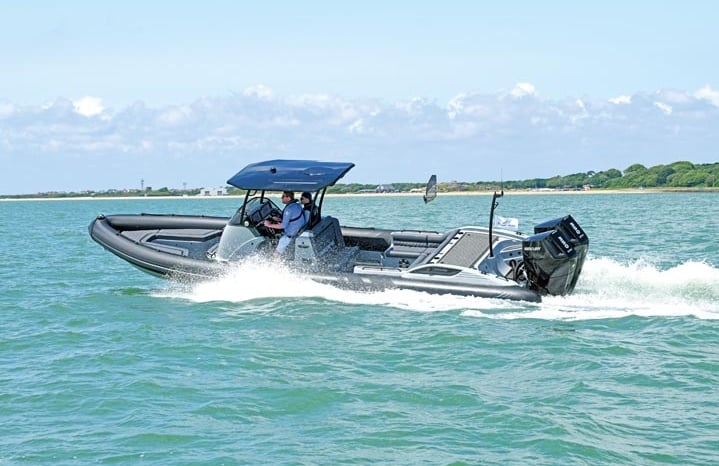
When heeled hard over, that a degree of self-restraint might be wise when dishing out the immense levels of torque that two 5.7L V10s can deliver
Specification
- LOA: 9.50m
- Beam: 2.55m
- Transom deadrise angle: 26.5 degrees
- Displacement: 2900kg (dry, with engines)
- Power options: Twin 300hp Mercury Verado V8s, twin 350hp Mercury Verado V10s, twin 400hp Mercury Verado V10s
- Fuel capacity: 600L (132 gallons)
- RCD category: B for 14
- Test engines: Twin 350hp Mercury Verado V10s
Performance
- 62.1 knots (2-way average, 30% fuel, crew 3)
- 0–40 knots: 9 seconds
Contact
Cobra RIBs UK
12 Priory Industrial Park
Airspeed Rd
Christchurch
Dorset BH23 4HD
www.cobraribs.co.uk

